Speedruns are some of the most bizarre and yet also entertaining ways a person can play a video game. They're also, if you've never tried one, extremely difficult, and require an intimate knowledge of the game you're trying to blast through. How intimate? Let's take a deep dive behind one to find out.
The following chapter (by frozenflygone) is excerpted from ANY%: A History of Speedrunning by Kat Brewster. The book is crowdfunding now – you can support it here: https://vol.co/collections/any-percent
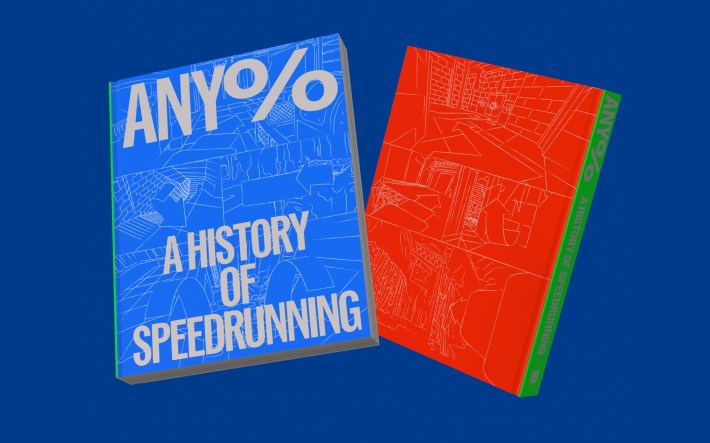
I’ve always loved 2D platformers, so my very first game in my life that I one-hundred-percented was Super Mario World. I had my dad print out a guide for that game and I had like, 50 pages of it in my closet, getting all the dragon coins, all the secret exits, you know. So platformers have always been for me, they’ve always been something I feel that I’m very skilled at.
I learned about speed running first from watching [speedrunner] TGH playing Undertale and I was like, I wonder… And I saw his GDQ run, I watched that, and I was like, “Ohh, that’s that’s really interesting. I wonder if he is still streaming that.” And I turned on his stream and no, he was playing this game called Celeste! I was like, this game looks really cool. I’m gonna buy it. So I played it casually and then I bought it for my younger brother, who also loves video games. We played games all the time together, but I was in college and he was at home. When we had both finished the game and he sat down and he was like, “Do you wanna race?” I was like…okay. So, it was like a 2 hour race and he beat me and I was like, “Alright! Let’s race again!” Then it was like an hour and a half and then we raced each other to sub hour and he beat me. We would send our journals back and forth, and then I beat him to sub-50. And then he, you know, he stopped. He ran out of interest. And I just never stopped. I never stopped.
So it was just me and me and my younger brother Matthew. That was what got me interested in speedrunning. I started out on Switch, then I moved to PC and keyboard. And then I got, you know, sub-40, sub-32. And then I started playing mods and got my run into GDQ and all that. It’s always about having the people. For me it was my brother, and then I met the community, and then I had people teach me what was going on. And then I got to do that for other people and it’s so great. That’s how I started with Celeste. You know, it was a game I was drawn to. It really fits everything I love – its themes and its queerness and all that kind of stuff is really important. And it’s just an amazing community.
Speedrunning Celeste really ties into the themes of the game, of overcoming things. You’re gonna struggle, you’re gonna fall down the mountain. Sometimes it’s not going to be fun, but at the end of it, you will triumph and you’ll learn things about yourself. And that’s why speedrunning leans directly into the game… It encourages you to speed around it, and it’s a cycle. It’s why it’s still one of the most popular speed running games out there… My run is like, back when I got it I was in the top 200? My run is probably not even close anymore. But the fact that there’s a 24 [m] 58 [s] now is absurd.
I learned from a tutorial from Programmatic’s Any% tutorial, it’s very famous, while I was going through he did like a second version of it which was cool and I just went through that and every couple of you know, weeks, I’d focus on
a different level and I’d go through it. I would do my runs, I’d get a PB and then I’d watch the same video again and be like, oh, I forgot I wasn’t doing this part. Ohh, how do I get this better? OK, let me watch someone with the time who has like 5 minutes faster than me. What are they doing? And then just playing a lot, playing a lot.
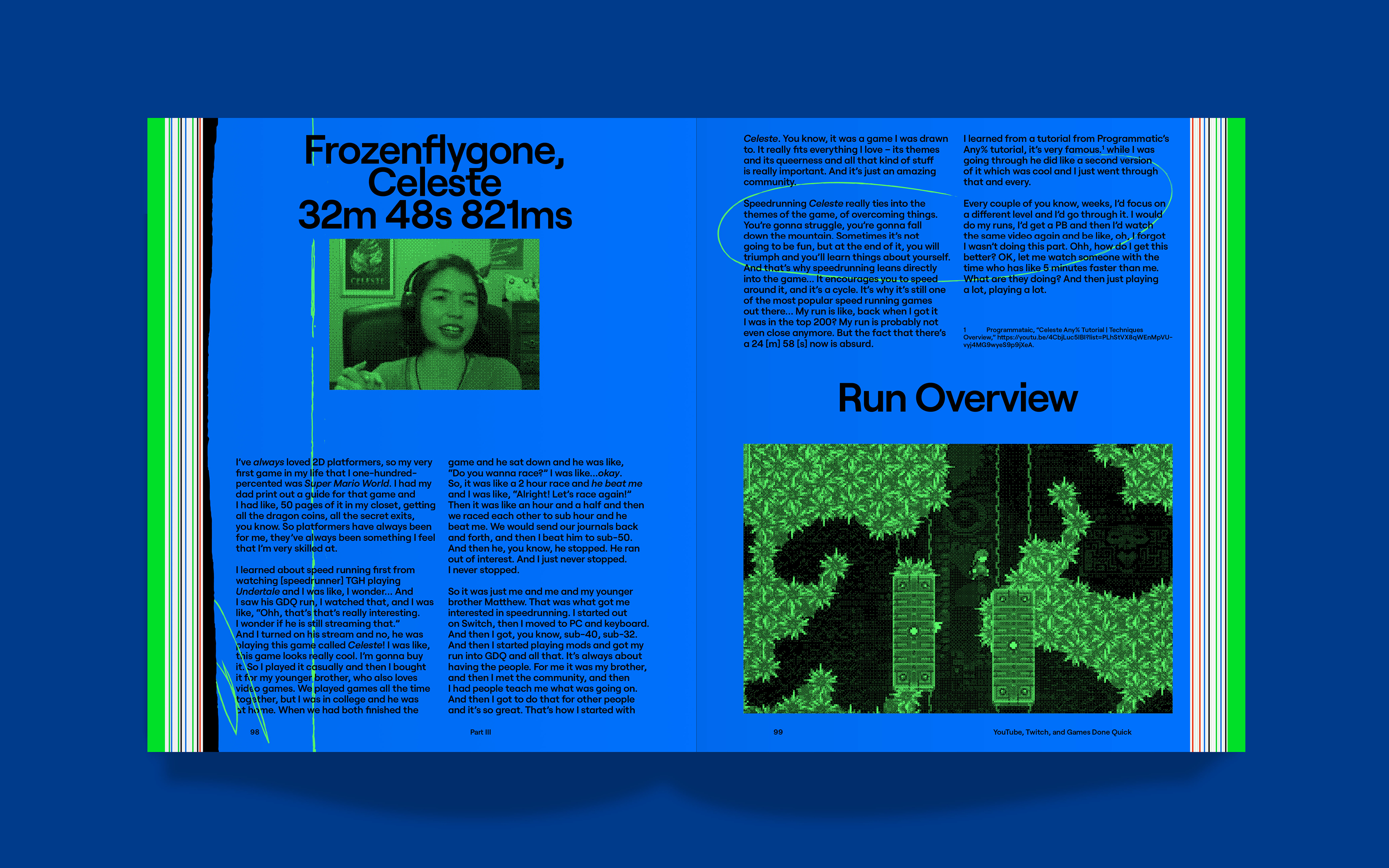
RUN OVERVIEW
In Celeste speedruns, you rely on expert movement, climbing, dashing, jumping and grabbing the walls to traverse a dangerous mountain, collect keys, and reach the top. The run demands extraordinary platforming feats, chaining combos together, and good old fashioned skill. In order to maximize efficiency, runners have created their own taxonomy of different moves.There are a
handful of particular moves and skips utilized throughout. Here are a few:
Dashing: There are super dashes, hyper dashes, wave dashes, extended dashes, ultra dashes, demo dashes… Dashing is critical. “There’s an important distinction between when you do a hyperdash and your hair is blue…and a hyper dash where your hair becomes red and you get your dash back. We like to call that an extended hyper or an extended wave dash where you end up getting your dash back… If you wait a certain number of frames longer before jumping, it kind of feels like you’re delaying and then you press the jump key, that’s how you’re going to get an extension…there’s something called supers and super dashes, also known as a dash jump, where you don’t hold any direction you just dash and then jump, that’ll get you more horizontal or that’ll give you more vertical height and you can also extend supers just like you extend wave dashes and you can get your dash back.”
Bunnyhop: In essence, a short hyperdash followed by a jump that saves you frames. The momentum from a dash combined with a jump (which increases your speed +402 and saves you two frames each) gets you both higher and further. The bunnyhop is included in a number of different combos. Jumping is, in general, pretty important!
Wall boost or wall bounce: “Another really, really important piece of speed tech that is super super clutch is called a wall bounce and what happens is…you dash up and then you jump away from the wall and that allows you to get really really high up. We’re going to use that in a ton of places to get our vertical height and our vertical distance.”
Neutral jump: “A more niche technique is neutral jumping. [Usually when] you climb up a wall you will eventually run out of stamina. That can be really not helpful for us in some areas where we want to be climbing up and up and up and up! So, there’s a technique called a neutral jump where you are actually going to climb the wall by jumping away with no buttons pressed and then you go back…to the wall and then jump again and that allows you to climb up without expending any stamina.”
Corner boost: An advanced jump around corners!
Search skip: A left, a jump, a diagonal up jump, and a ledge grab or an up left dash. Sounds simple, right? This allows players to skip picking up a key, which is usually required to progress in the game.
Forsaken City
0m 11s
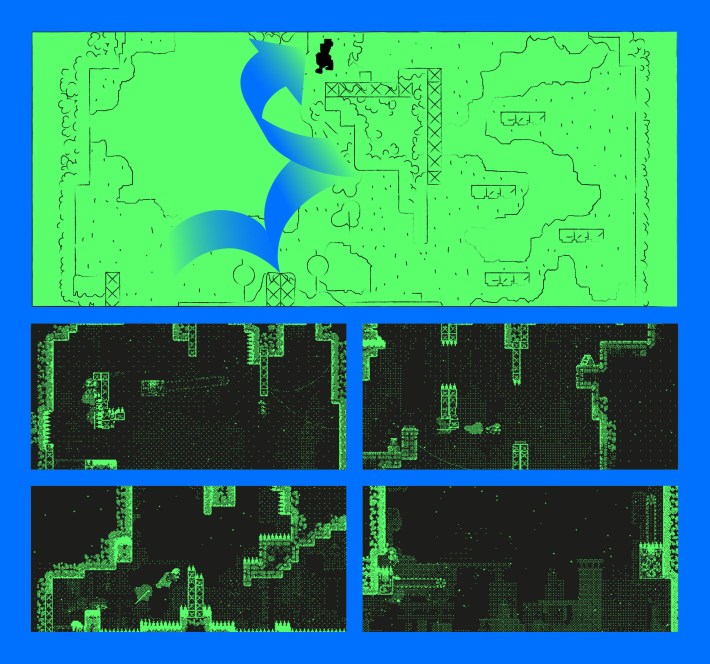
“Redhead girl goes very fast. Up a
mountain. And also discovers herself
along the way. That’s the crux of it.”
First, skip the intro cutscene. Then head onto Forsaken City. There’s a lot of movement manipulation and routing here to avoid things like unnecessary moving platforms.
At times, Madeline even dashes through and jumps off of spikes using frame-perfect moves. A guide to movement and some skips for the first level, Forsaken City, is from a TAS run.
Old Site Mirror Skip
1m 33s

So, this room is really interesting. To activate this cutscene you have to go away from the mirror and then come back to it and then you can skip the cutscene. But there’s a really cool skip where we’ll end up inside the Dream Block. This is a pretty easy to learn skip where we’re going to do an extended hyper and then do an up left dash kind of into the corner. Then we end up inside the Dream Block which is very silly. I don’t really understand why this happens, but your Y-distance is the same and we just get put in the middle of the room. So then you can just dash up!
Badeline Fight
1m 49s
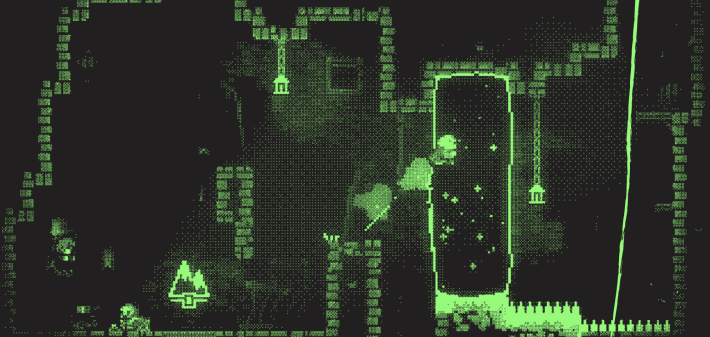
So, now we’ve got Badeline. Badeline’s gonna be chasing us, and the most important thing is to just keep moving forward if you screw up your intended strat or anything like that just keep moving. Keep moving away from Badeline. She’ll always copy what you’re doing and as long as you don’t sit around and freeze, you can kind of stay out of her way and not die here.
Entry Cycle Key Skip
2m 52s
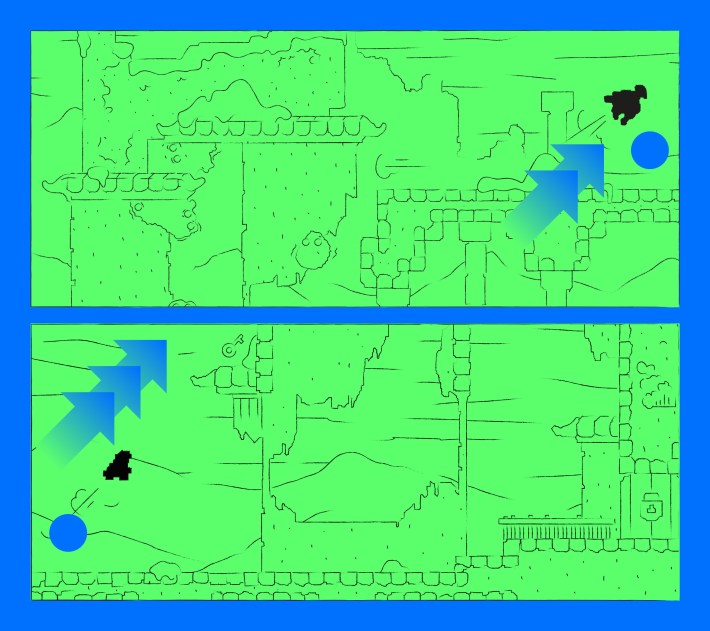
So, [let's] talk a little bit about cycles. When you enter the room, that’s what we’ll refer to as entry cycle. We also have something called death cycle and those are different. When you enter a room, when you die in a room, the pattern of the enemies will be different…so you have to be cognizant when you’re practicing to be sure to practice both the entry cycle and the death cycle until you get really really comfortable with going between rooms and you can kind of just prioritize the entry cycle uh stuff like that so…you want to do a super, be sure to extend (it so jump a little bit late) and then up right into the transition…Then you’ll then get your dash back, up right again, and you can climb up to the key! That way you don’t have to climb around.
[Luke's note: because this is a website and not actually a book, you can watch the run in question below]


